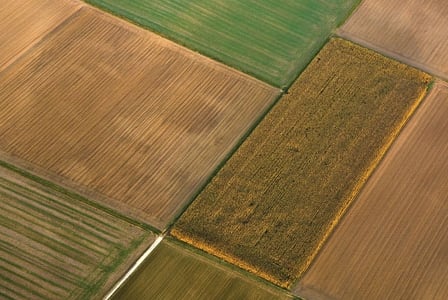
Rising food costs and an imminent food crisis are headline news. What can we do to sustain a healthy global food supply, and what role can biodiversity play?
There isn’t a person among us who isn’t affected by the growing food crisis and the related issue of vanishing food biodiversity.
We’ve felt it in our pocketbooks at the grocer with rising food costs—nearly 5 percent in the last year alone for common staples including meat, bread, fresh vegetables, and dairy products.
We’ve heard about it in the media, with reports about the diminishing number of Canadian farms, and in political arenas, with seed use and ownership becoming a global fight between farmers’ rights and corporate interests.
Around the world a variety of social, economic, political, and environmental factors are contributing to a meltdown of traditional food systems. It’s becoming increasingly clear that a collective effort will be required to neutralize the effects.
Biodiversity basics
Like many Canadians, Port Moody resident Sharon Ross has family roots in the agricultural sector. She can recall visiting her grandparents’ orchard in the Okanagan Valley in BC, where they grew apples, pears, cherries, plums, and peaches.
Fast-forward 25 years, and everything is gone except the apples. The rest of the orchards have been replanted, a family financial decision that is also a microcosm for what is happening across Canada and internationally.
Biodiversity has diminished significantly over the last century, prompting the concerned scrutiny of groups such as the United Nations Food and Agriculture Organization (FAO). The European Commission Directorate-General for the Environment has gone so far as to label this loss of plants and animal breeds a “biodiversity crisis.”
Why is biodiversity important for preserving not only our ability to feed ourselves but also life in general? Nature is an intricate web of relationships. On some level people, plants, and animals are all connected to the smallest soil microbe and single-celled marine plankton.
Genetic diversity is nature’s backup against disaster. If a disease within one crop affects one variety, other varieties may have the genetic strength to resist it. Decreased diversity, therefore, impacts our ability to survive.
“It’s the loss of genetic diversity within species that weakens our resilience to pests, diseases, and climate change,” reports the Unitarian Service Committee of Canada (USC), an Ottawa-based organization that supports family farms, strong rural communities, and healthy ecosystems.
In the case of apples, for instance, most people can finger-count those they know—Gala, McIntosh, and Red Delicious. But had you attended last year’s fall University of British Columbia Apple Festival, you would have been able to taste 60 varieties.
Of the tens of thousands of species in our plant repertoire, only about 150 are grown commercially around the world. Twelve crops, meanwhile, supply 80 percent of the world’s dietary energy.
International food perspectives
The Action Group on Erosion, Technology, and Concentration (ETC Group), in their 2009 Who Will Feed Us? report, emphasizes that the failure of Canada’s food system and diminishing diversity is part of an international issue.
“The loss of biodiversity will have a major impact on the ability of humankind to feed itself in the future, all 9 billion of us by 2050, with the poorest in the world most affected,” agrees the FAO.
At the same time, the role of small agriculturalists is vital when it comes to preserving biodiversity because they have provided the world’s gene banks with an immense number of diverse plant varieties.
Two major challenges to global food production and security include the commoditization of seeds (including the increasing consolidation within the seed market) and climate change.
Increasing consolidation in the seed market means that a smaller number of seed companies have an escalating amount of power. The danger in this consolidation is that these few companies have the power to patent varieties, therefore preventing farmers from saving or exchanging seeds. The companies also have the power to commercialize only crops with the greatest yields, leading to underutilized varieties.
Then there’s climate change. Small-scale farmers who represent 80 percent of the world’s rural poor are already feeling the often damaging effects of evolving weather patterns—a challenge expected to continue.
The FAO estimates a 20 to 40 percent decline in agricultural productivity in developing countries due to climate change. However, protecting our valuable biodiversity is essential to coping with climate change, as some genetic varieties may be more resistant to the unpredictable consequences of climate change, such as droughts, floods, or pests.
Resetting the table with new food policy
Closer to home, meanwhile, to help secure the food supply within our own borders, 3,500 people have worked together to create “Resetting the Table: a People’s Food Policy in Canada.” This comprehensive document, released in April 2011, is the first national food policy developed by the food movement (peoplesfoodpolicy.ca).
The authors of the report argue that the root problem of food insecurity is that “food is treated as a market commodity rather than as a necessity of life.” They urge innovative solutions that recognize the important role of biodiversity and help us reclaim the ability to feed ourselves.
Hungry for action?
- Re-evaluate your shopping choices. Shop at local farmers’ markets and experiment with heritage varieties, which are often more flavourful than typical supermarket selections.
- Grow heritage seeds in your backyard or balcony plot. Local seed companies can supply you with information on what grows well in your area.
- Participate in Slow Food Canada (slowfood.ca), a movement that supports food biodiversity.
- Ask your politicians about their agricultural policies.
- Let them know that farmers’ rights and food system security must be supported.
- Support Canadian organizations such as the National Farmers Union Canada (nfu.ca) and Seeds of Diversity (seeds.ca).
- Protect international farmers’ rights by supporting USC Canada (usc-canada.org).
Given the interconnectedness of biodiversity and our food supply, we’re all essentially eating from the same giant plate. The time is now to share the burden, and hopefully reap the harvest, of our collective efforts in support of healthy food systems.
Heritage varieties to try
The nutritional value of many grains and vegetables has decreased between 1950 and 1999, according to a 2004 study in the Journal of the American College of Nutrition. The authors suggest this drop may be due to new varieties cultivated for yield rather than nutrition.
Consider these delicious and nutritious heritage varieties, which can be found at farmers’ markets and are also available online as seeds.
Dragon carrot
Step aside, traditional carrot lovers, for this vibrant variety. Its purple-red skin covers the traditional orange flesh that is loaded with beta carotene.
Red velvet lettuce
You won’t believe the deep red colour of this lettuce; the leaves are tender and sweet and packed with protective nutrients.
Gold medal tomato
One of the sweetest tomatoes you’ll ever taste, this large bi-coloured tomato has yellow- and red-streaked flesh and is an excellent source of the antioxidant lycopene.
Round of Hungary pepper
No need to spend top dollar on peppers if you can grow your own. This sweet, ribbed pepper is squat and round. It begins green and becomes red when mature.
Champion collards
You’ll enjoy this hardy variety of nutritious, dark green-blue collards braised in olive oil and garlic.



